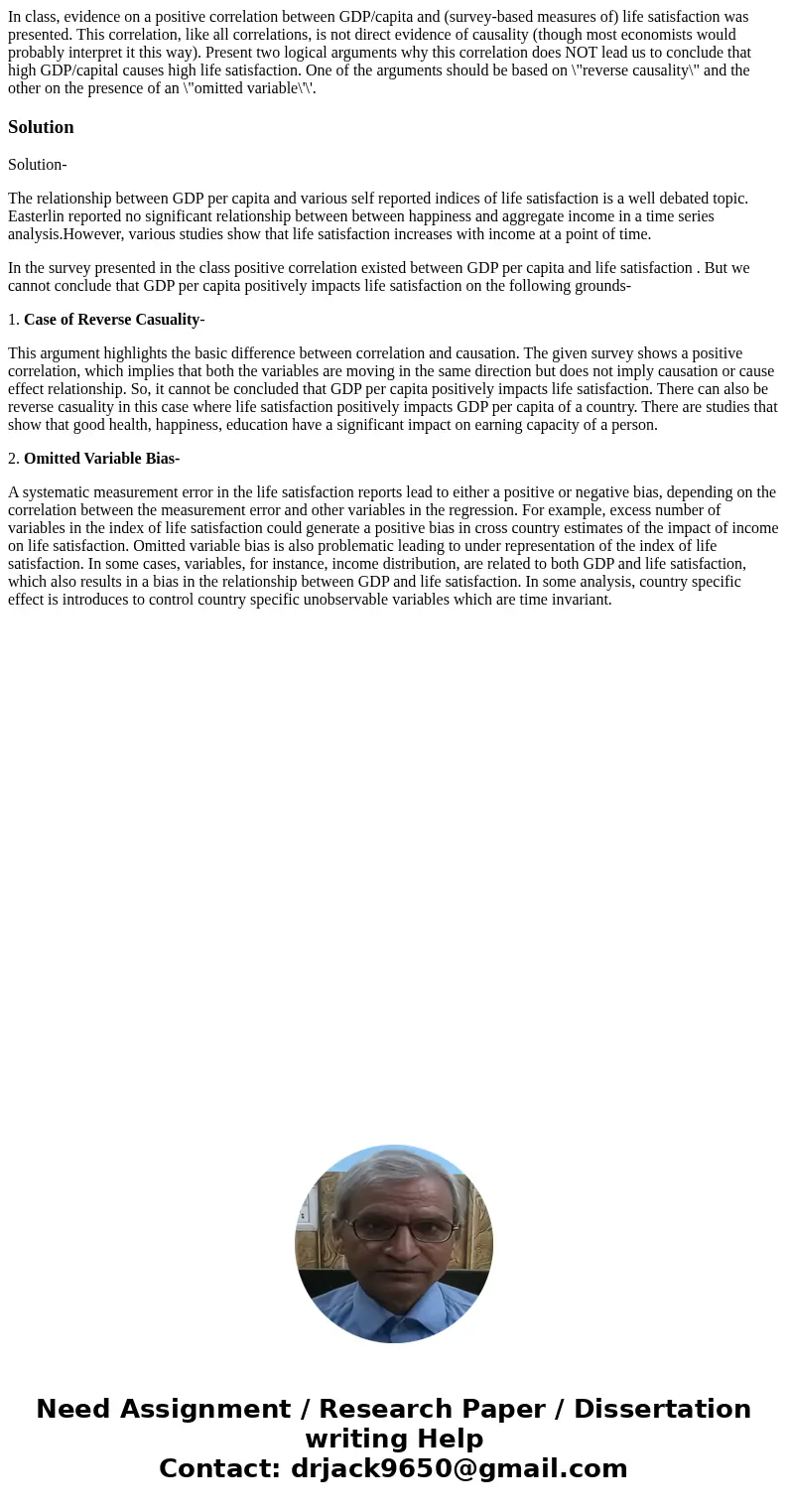In class evidence on a positive correlation between GDPcapit
Solution
Solution-
The relationship between GDP per capita and various self reported indices of life satisfaction is a well debated topic. Easterlin reported no significant relationship between between happiness and aggregate income in a time series analysis.However, various studies show that life satisfaction increases with income at a point of time.
In the survey presented in the class positive correlation existed between GDP per capita and life satisfaction . But we cannot conclude that GDP per capita positively impacts life satisfaction on the following grounds-
1. Case of Reverse Casuality-
This argument highlights the basic difference between correlation and causation. The given survey shows a positive correlation, which implies that both the variables are moving in the same direction but does not imply causation or cause effect relationship. So, it cannot be concluded that GDP per capita positively impacts life satisfaction. There can also be reverse casuality in this case where life satisfaction positively impacts GDP per capita of a country. There are studies that show that good health, happiness, education have a significant impact on earning capacity of a person.
2. Omitted Variable Bias-
A systematic measurement error in the life satisfaction reports lead to either a positive or negative bias, depending on the correlation between the measurement error and other variables in the regression. For example, excess number of variables in the index of life satisfaction could generate a positive bias in cross country estimates of the impact of income on life satisfaction. Omitted variable bias is also problematic leading to under representation of the index of life satisfaction. In some cases, variables, for instance, income distribution, are related to both GDP and life satisfaction, which also results in a bias in the relationship between GDP and life satisfaction. In some analysis, country specific effect is introduces to control country specific unobservable variables which are time invariant.

 Homework Sourse
Homework Sourse